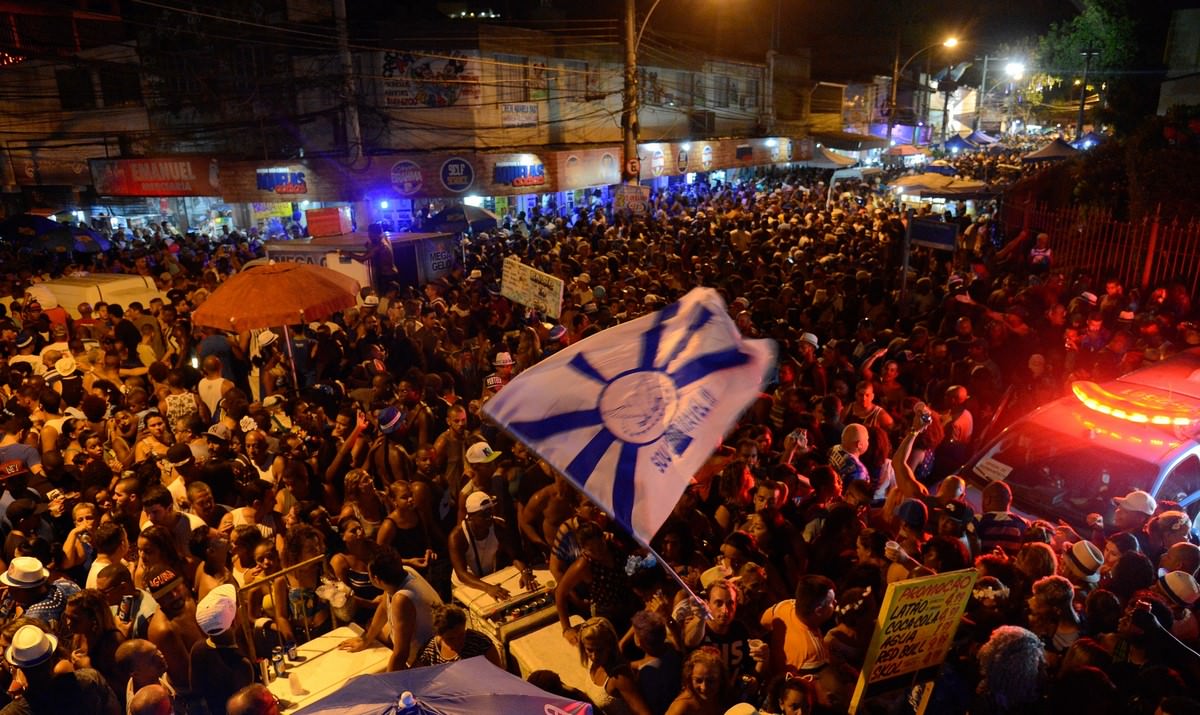Rural area in the century 17 the industrial district at the beginning of the century 20, the neighborhood is now one of the cradles samba of Rio de Janeiro. House of traditional schools Portela and Imperio Serrano and Jongo da Serrinha, Madureira will be the next Rolé Carioca itinerary – a more than appropriate destination to celebrate the month of Black Consciousness. The ride, free, will take place on 24 November (Sunday) with meeting point at Madureira Park (Boiler input the street Soares) at 9:00. There is no talk of the region without remembering sambas portraying their daily lives and packed dawns; refer the stately images of schools that are pride of the residents of the neighborhood and revere characters that are part of its history, as Dona Ivone Lara, monarch, Christmas Portela and Paulinho da Viola ambassador.
The Rolé Carioca Project is a realization of the M’Baraká studio, with the national coordinator content consulting the course of History of Estacio, Rodrigo Queen, and historian William Martins – master of ceremony of the project and guides the tours. Rolé is sponsored by the City of Rio de Janeiro and the Municipal Department of Culture, Estácio and Riocard Mais and also co-sponsored by the companies SHIFT ETT and Cinesystem. All sponsorships were made through the Municipal Cultural Incentive Law – Lei do Iss.
Madureira houses the tradition of jongo and the pulse of contemporary dances charm, of black culture references. That's where is located one of the most important popular markets in the city and where is the park turned leisure reference and culture of North Rio area. District cut the railway line built by Dom Pedro II 1890, Madureira still has the bucolic atmosphere of the suburbs: houses with tiled facades, duplexes with yards, neighbors chatting in chairs placed in the street, phonographs playing old sambas. Who sees the neighborhood today can not imagine that the area was once a large farm cattle and cane sugar,, whose owner - Lourenço Madureira - named the place.
From the end of the century 19 and beginning of the century 20, with the installation of the railway, the increasing industrialization of the country and the expulsion of the central areas of city workers, the farm is subdivided and Madureira becomes one of the main neighborhoods of Rio suburb. Little by little, especially during the Vargas government, immigrants from various countries came to Brazil to work in factories and farms, taking the suburban setting to be filled with people of different nationalities. Thus, Portuguese, Turkish, Lebanese, German, Poles and Russians started to live with the residents of Madureira and help give the neighborhood its current face.
Sign up to receive Event News
and the Universe of Arts first!
About hang out Carioca
New and unusual perspectives on the city is one of Rolé Carioca's proposals – project, which is in its 7th edition, We have visited different itineraries that gathered over 18 thousand people, crossing over 200 kilometers through the streets of Rio de Janeiro since 2013. or portal www.rolecarioca.com.br gathers information, trivia and historical data on all the scripts already made. Recently the Heritage Institute National Historic and Artistic (IPHAN), linked to the Ministry of Citizenship, chose Rolé Carioca as one of the eight winners of the Rodrigo Melo Franco de Andrade Award in 2019 – running over 300 whole country projects. Main awards on preservation and development of heritage in Brazil, Rodrigo Award recognizes, three decades ago, preservation actions that express the diversity and richness of cultural property across the country. The project won the category excellence initiatives in the field of Cultural Heritage Material.
| SERVICE - Project hang out Carioca – next stop: Madureira |
| Date: 24 Nov (Sunday) |
| Time: 9 hours |
| Meeting point: M. Park, at the entrance by Rua Soares Caldeira (behind the Madureira shopping mall) |
| Free - No registration required |
| Duration: approximately 3 hours |
| www.rolecarioca.com.br |

